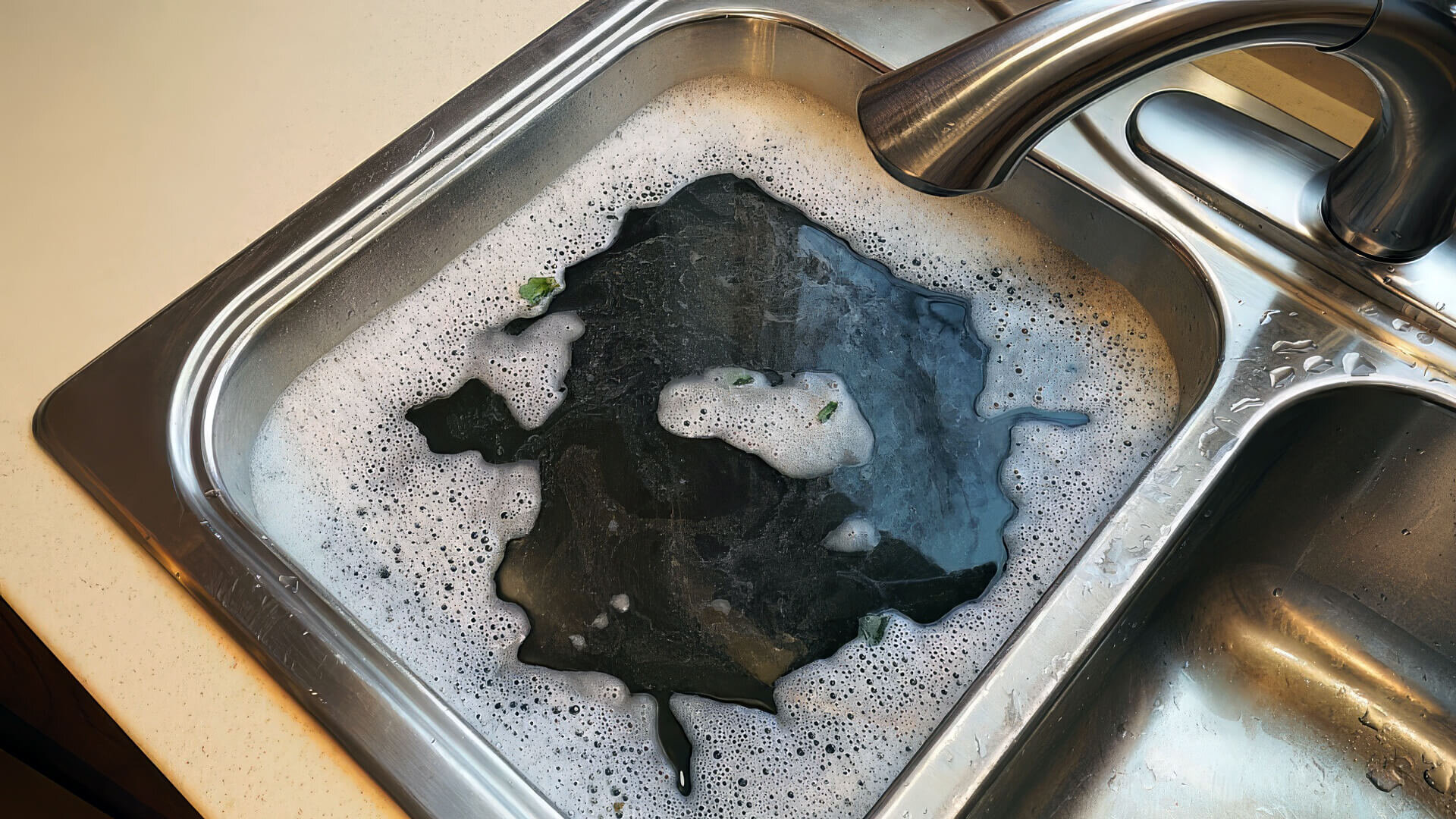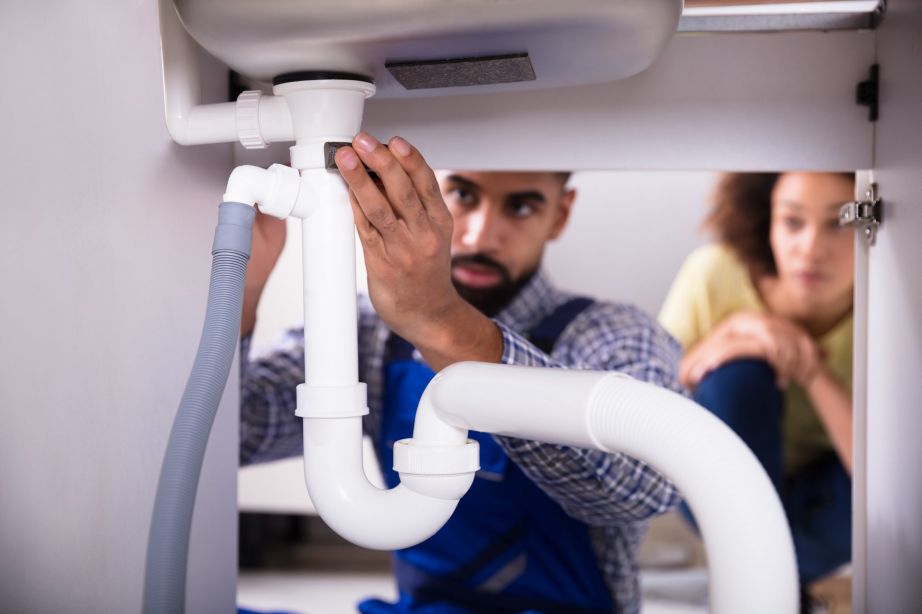Basic Fixes For A Slow-Draining Sink
Basic Fixes For A Slow-Draining Sink
Blog Article
We've stumbled on this great article relating to 4 Tips to Fix a Slow Draining Sink directly below on the web and accepted it made good sense to write about it with you in this article.

Introduction
We have actually all been there: You're brushing your teeth or cleaning your hands, and you notice the water pooling in the sink. Instead of swiftly swirling away, it lingers, turning your once-refreshing morning regimen into a small swamp scene. A slow-draining sink isn't simply annoying; it's often an indication of larger plumbing problems hiding under the surface. The good news is that a lot of slow-draining sinks can be repaired with a little know-how, a couple of standard devices, and some patience. Prepared to tackle this task head-on? Let's roll up our sleeves and dive right in.
Understanding the Reasons For a Slow-Draining Sink
Before you start poking around in your pipes, it helps to know what may be causing the slowdown. Recognizing the root cause makes it easier to select the ideal solution.
Tools and Products You'll Need
The right tools make all the distinction. Thankfully, you will not require a completely stocked plumbing technician's van to do the job.
Step-by-Step Guide to Taking Care Of a Slow-Draining Sink
Currently, allow's get into the nitty-gritty. This detailed process will guide you via basic techniques to restore your sink's drain.
Action 1: Remove and Tidy the Stopper
Frequently, the stopper (that little plug you lower to block water) is the initial culprit. Remove it very carefully and wipe any kind of hair or gunk trapped around its base. Wash it extensively before putting it back in place.
Action 2: Use a Plunger to Displace Debris
Got that bettor all set? Placement it over the drain and offer it a few firm pumps. The idea is to develop suction that can loosen up any blockage. If you see bits of particles floating up, you get on the appropriate track.
Action 3: Try a Drain Serpent or Cable Wall Mount
If the bettor does not suffice, it's time to draw out the drainpipe snake. Gently feed it right into the drainpipe and twist as you go. You might feel some resistance-- that's most likely the blockage. Maintain turning and pulling up until you eliminate the obstruction. If you don't have a drain snake, a corrected the alignment of wire hanger can work in a pinch.
Step 4: Use a DIY Drainpipe Cleanser
An all-natural cleaner made from cooking soda and vinegar can break down recurring grime. Pour half a cup of cooking soft drink into the drainpipe, followed by half a mug of vinegar. Let it fizz for around 15 mins, after that flush with hot water. This chain reaction often does wonders for small obstructions.
Tip 5: Reassemble and Evaluate the Sink
Placed every little thing back with each other and run the tap. Does the water now swirl down the drain at a reputable speed? If yes, give yourself a pat on the back. If not, don't anguish-- there are still a few even more tricks up your sleeve.
Important Tools for DIY Repairs
A plunger is your go-to beginning point. A small, sink-sized bettor produces suction that can remove minor obstructions. For even more consistent blockages, a drainpipe snake (sometimes called a plumber's auger) functions wonders. A set of handwear covers, a flashlight, and maybe a set of protective safety glasses are likewise handy.
Advised Cleaning Solutions
Moderate recipe soap and warm water can help break down greasy accumulation. A mixture of baking soda and vinegar is a reliable home remedy, and enzymatic cleansers provide an even more eco-friendly technique. Maintain chemical drainpipe cleansers as a last resort, as they can be severe on your pipes.
Typical Wrongdoers Behind Slow Drainage
So, what's blocking things up? Usually, it's a blend of daily debris-- think hair, soap residue, tooth paste deposit, and leftover food particles. Gradually, these little bits gather and hold on to the pipe walls, gradually tightening the passage and making it harder for water to go through. In some cases, mineral deposits from tough water can likewise add to the crud, producing the perfect tornado for persistent clogs.
When is it Time to Act?
If you discover the water draining slower than normal, it's a great concept to intervene faster as opposed to later on. Waiting as well long might cause finish blockages, unpleasant smells, or even pipeline damages. If the water takes more than a few seconds to clean out after switching off the tap, consider it a red flag and get ready to put on your do it yourself hat.
Safety First: Precautions and Prep work
Before you launch into unclogging mode, think of safety and security. You're managing possibly filthy water and particles, so slip on a set of gloves. If you're using chemical cleaners, guarantee the space is well-ventilated and follow the guidelines on the label.
Protective Equipment and Office Setup
Lay down some old towels or cloths around the sink area to capture splashes. Eliminate any type of items that may get in your means, like soap dispensers or tooth brush holders. Make sure you have good illumination-- get a flashlight if required.
Alternative Techniques for Stubborn Clogs
Not all obstructions are created equal. If your sink still declines to coordinate, think about these alternate options.
Sodium Bicarbonate and Vinegar Approach
We already touched on this, but it's worth noting once again. This mild, eco-friendly method is much safer than chemical cleaners and often rather efficient.
Chemical Drainpipe Cleaners
Enzyme-based cleaners utilize all-natural microorganisms to absorb organic matter. They're an outstanding selection if you're looking to stay clear of harsh chemicals. Simply keep in mind, they may take a bit longer to function their magic.
Chemical Drainpipe Cleansers: Advantages And Disadvantages
Chemical cleaners can blow up with hard obstructions quickly, however they're not without disadvantages. They can create warmth and fumes, damages pipelines if utilized exceedingly, and pose environmental risks. Use them moderately, and always comply with the directions very carefully.
Preventive Measures to Maintain Your Sink Flowing
Prevention is the best remedy. By embracing a couple of simple behaviors, you can maintain your sink from slowing down to begin with.
Routine Cleaning Behaviors
Clean down the sink basin and fixture location frequently. Eliminate hair or food bits prior to they have an opportunity to wash down the drainpipe.
Staying Clear Of Harmful Materials Down The Tubes
Hesitate prior to unloading coffee grounds, grease, or fibrous vegetable scraps down the sink. These wrongdoers hold on to pipe walls, producing clogs gradually.
Routine Upkeep Checks
Set up a quick regular monthly assessment. Run warm water with the sink for a few minutes, paying attention to the circulation. If it seems slow-moving, act quick before it ends up being a full-blown blockage.
When to Call a Professional Plumbing Professional
In some cases, no matter exactly how tough you try, that block simply won't move. That's when it's time to generate the pros.
Signs That Indicate an Extra Serious Concern
If your sink drains slowly in spite of numerous attempts, or if you notice water supporting in other fixtures (like your shower or bathroom), you might have a much more significant pipes issue hiding much deeper in the system.
Stabilizing Do It Yourself Efforts with Specialist Help
While DIY can conserve you money and offer a sense of achievement, there's no pity in calling a professional. A specialist plumbing can analyze your whole pipes arrangement, ensuring there's no underlying damage or long-term trouble that might cost you much more later on.
Contrasting Costs and Long-Term Solutions
Prior to deciding, consider the big picture. A low-cost, quick fix could resolve the problem briefly, but investing in a more permanent service can save you cash and stress and anxiety in the future.
Weighing the Costs of DIY vs. Expert Solutions
DIY fixes usually cost little more than the cost of a bettor or a bottle of baking soda. Expert solutions, on the other hand, featured a cost yet might protect against repetitive issues and costly repair work later.
Investing in Quality Fixtures and Upgrades
If your sink's layout adds to frequent obstructions, it could be worth updating to higher-quality components or changing the plumbing layout. Consider this a financial investment in your home's functionality and convenience.
Verdict
A slow-draining sink can seem like a minor irritability, however it's commonly an indicator that your plumbing requires a little tender loving care. By comprehending the root causes, using the right devices and techniques, and committing to basic preventive measures, you can maintain your sink flowing easily. And when all else stops working, never ever wait to call in a specialist-- your home's pipes deserves the financial investment in care and upkeep.
Three Common Ways to Fix a Slow Drain
Baking Soda Method
Boil a full pot of water. Measure out cup of baking soda and pour it down the drain. Then take cup of the magical cleansing substance known as white vinegar and drop that down there too. Allow the mixture to fizz in the drain for five minutes as the vinegar and baking soda combine. Now dump in that whole pot of boiling water. This combination of cleaning substances should clear out anything that is causing your sink to drain slowly. If it doesn t...
Zip-It
If the baking soda method doesn t clear out your drain, it may be because a significant amount of hair and/or other debris has collected there and you need to remove it. Purchase a Zip-It tool at any home improvement or hardware store and insert it into your drain. It will catch any collected hair or debris that s blocking the flow of water. Pull it out. If it s got a big clump of hair, etc. on the end, you ve probably got your culprit.
Drain Cleaner
If these methods don t work, there is the standard drain cleaner that you can also buy in a hardware store or even your local grocery store. It s better if you can use a household solution, but these drain cleaners often work in a pinch. They re very simple to use. You generally just dump them in your drain and wait. If even this method is not effective, it may be time to call the plumber.
https://www.mrrooter.com/oneida/about-us/blog/2017/july/three-common-ways-to-fix-a-slow-drain/

I'm just very inquisitive about Solved! How to Fix a Slow Sink Drain and I hope you enjoyed the new entry. Don't hesitate to pause to distribute this entry if you enjoyed it. Thanks a lot for going through it.
Call Today Report this page